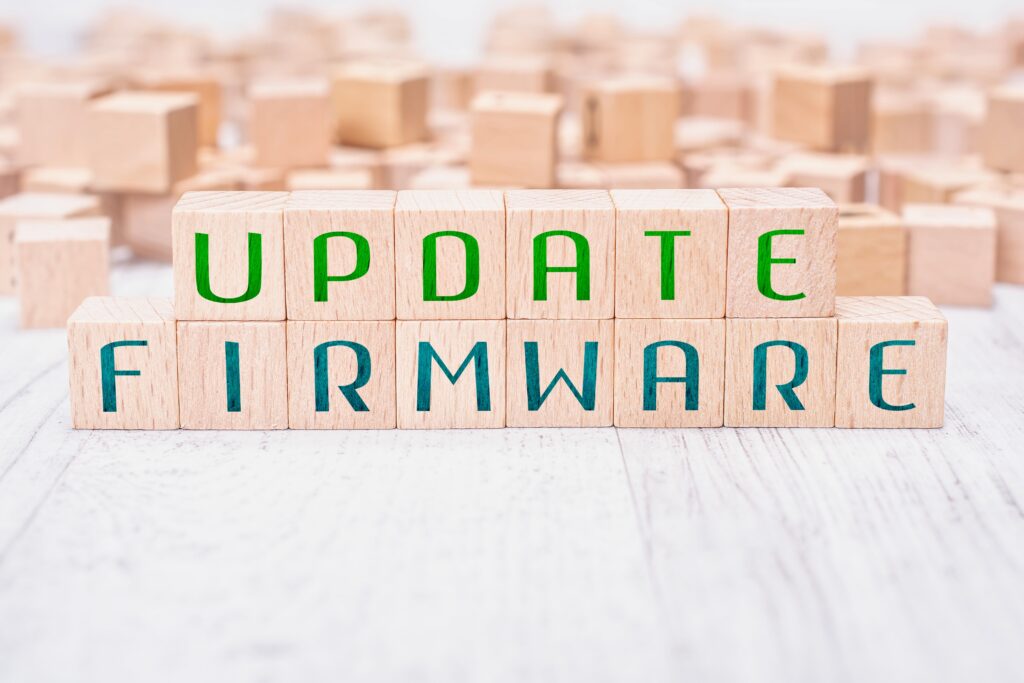In an increasingly connected and technologically advanced world, firmware is the unsung hero that powers countless devices, enabling their intricate functionalities while acting as a bridge between hardware and higher-level software. As a specialized type of software, firmware provides low-level control essential for the seamless operation of various devices, from household appliances to sophisticated automotive systems. Engineers and developers spend countless hours designing, coding, and testing this foundational software, ensuring that hardware can perform its intended functions effectively and reliably.
This article offers an in-depth overview of firmware design and development services, exploring the nature of firmware itself, the various types, and the importance of maintaining updated firmware to maximize device performance. We will delve into the complexities involved in firmware development, the workflow steps, advantages, types, and design templates, equipping readers with a comprehensive understanding of this vital aspect of modern technology. Moreover, examples of firmware in different applications will illustrate how this critical software operates in real-world scenarios and the significant role it plays in enhancing the functionality and security of devices. Lastly, we will address common questions regarding firmware development to uplift the overall comprehension of this fundamental technology.
What Is Firmware?
Firmware is a finely-tuned software component embedded in hardware devices to control specific operations and functionalities. This software allows devices to perform essential tasks and interact with other applications or systems. Unlike regular software that runs on general-purpose operating systems, firmware is specifically designed for a particular set of hardware. Often housed within the device’s non-volatile memory, firmware initializes device components, conducts self-checks during the boot-up process, and manages interfaces with user software, essentially dictating how users interact with the device.
How Does Firmware Work?
Firmware can be thought of as a crucial layer of software embedded directly in hardware devices, functioning like a detailed set of instructions that guide the hardware’s operations. When a device is powered on, the firmware plays a vital role in initializing its various hardware components. This initial setup is critical as it ensures that all parts of the device are ready to communicate and work in unison.
Once the hardware is initialized, the firmware establishes and manages the communication pathways between the hardware and the higher-level software applications running on the device. It acts as a bridge, translating high-level commands from the operating system or applications into specific actions that the hardware can execute.
Moreover, firmware is responsible for a range of essential functions beyond just booting up the device. It handles user input, allowing the device to respond to commands and interactions seamlessly. Additionally, firmware efficiently manages hardware resources—allocating memory, processing power, and other system resources to ensure optimal performance.
Firmware can also be updated to enhance functionality, improve security, or correct bugs, making it a vital component in the lifecycle of modern electronic devices. By ensuring that hardware operates correctly and efficiently, firmware plays an indispensable role in the overall user experience, enhancing both device performance and reliability.

Types of Firmware
Firmware is specialized software providing low-level control for a device’s hardware and resides in non-volatile memory, making it essential for operation. Here are the main categories of firmware:
Boot Firmware
Boot firmware initiates a device’s startup by performing hardware initialization and loading the operating system. Examples include the Basic Input/Output System (BIOS) and Unified Extensible Firmware Interface (UEFI), with UEFI offering features like graphical interfaces and faster boot times. It may also incorporate security features such as Secure Boot to prevent unauthorized access during startup.
System Firmware
System firmware acts as a liaison between hardware and the operating system, enabling communication among devices. It includes essential services, device drivers, and supports updates to maintain optimal performance. Essentially, it ensures that hardware components operate together seamlessly.
Application Firmware
Application firmware supports specific applications running on a device, controlling features tailored to those needs. For instance, smart appliances utilize application firmware to manage settings, while gaming consoles enable game features and online capabilities. This type of firmware enhances user experience by adapting to evolving software requirements.
Embedded Firmware
Embedded firmware is closely integrated with hardware to manage specific functions, found in devices like routers, automotive systems, and medical devices. Often optimized for real-time operations, it ensures reliable task execution, such as processing sensor data for safety features in cars or managing smart home functionalities. The rise of automation and the Internet of Things (IoT) has increased the complexity and importance of embedded firmware.
Understanding Firmware Updates
Firmware updates play a crucial role in optimizing device performance, resolving bugs, enhancing security vulnerabilities, and introducing new features that expand functionality. These updates can be implemented through a variety of methods, including over-the-air (OTA) updates, the use of USB drives, or through direct connections to a computer.
Staying current with firmware updates is essential for maintaining the longevity and efficiency of your devices. Not only do these updates improve the overall user experience by providing smoother operation and faster response times, but they also protect against potential security threats that could compromise sensitive data. Furthermore, regular updates can lead to the addition of exciting new features, ensuring that devices remain relevant and competitive in an ever-evolving technological landscape.

As technology continues to advance, manufacturers often roll out updates that can significantly enhance a device’s capabilities, making it imperative for users to stay informed and proactive about installing these updates. By doing so, you not only extend the life of your device but also maximize its performance and safeguard it against emerging threats.
What Is Firmware Development?
Firmware development is the process of designing, coding, testing, and deploying firmware for hardware devices. It involves working closely with both hardware and software components, ensuring that the firmware optimally manages the device’s functionalities while complying with specifications and requirements.
Embedded System Firmware Development Workflow Steps
The firmware development process can be broken down into several key stages:
- Requirement Analysis: Understand the functionality and performance requirements of the firmware based on the hardware capabilities and user expectations.
- Design and Architecture: Create a high-level architecture that defines the firmware structure and outlines the interactions between different modules.
- Coding: Write the firmware code in applicable programming languages, commonly C or C++. This phase also includes establishing coding standards and documenting the code for future reference.
- Testing and Validation: Conduct comprehensive testing, including unit tests, integration tests, and system tests to ensure the firmware behaves as expected.
- Deployment: Once tested and validated, the firmware is deployed to the device. This step may involve implementing an update mechanism for future updates.
- Maintenance: After deployment, continual maintenance and updates may be necessary to fix bugs, enhance features, and improve security.
Advantages of Firmware
Firmware offers a range of notable advantages that enhance the overall performance and reliability of devices. Here are some key benefits:
Efficiency:
Firmware operates at a level that is closely aligned with the hardware, enabling it to execute tasks more quickly and efficiently than higher-level software solutions. This proximity to the hardware allows for faster processing times and lower latency, resulting in smoother user experiences.
Control:
One of the standout features of firmware is its ability to provide precise control over hardware components. This level of control ensures that devices run optimally, as firmware can finely tune operations specific to the hardware’s capabilities and requirements, leading to enhanced performance and functionality.
Stability:
Carefully developed firmware significantly contributes to device stability by reducing the likelihood of software crashes and malfunctions. A robust firmware architecture can create a more dependable operating environment, which is crucial for applications that require high availability and reliability, such as medical devices and industrial machinery.
Security:
In an era where cybersecurity threats are increasingly prevalent, regular firmware updates play a vital role in enhancing device security. These updates not only address existing vulnerabilities but also implement new security measures, making it more difficult for unauthorized access and attacks. This proactive approach helps safeguard sensitive data and maintain user trust.
Cost-Effectiveness:
Well-designed firmware can also lead to significant cost savings for manufacturers. By optimizing system performance and minimising hardware requirements, firmware can lower production costs and reduce the need for expensive components. As a result, companies can deliver high-quality products at competitive prices, ultimately benefiting both manufacturers and consumers.

What are the Three Levels of Firmware?
Firmware can be classified into three levels:
- Low-Level Firmware: This firmware interacts directly with the hardware, managing the basic operations. An example is the firmware that runs on microcontrollers used in embedded systems.
- Medium-Level Firmware: It provides a layer of abstraction between hardware and application software, typically including device drivers. For instance, firmware controlling a GPU may manage video output without higher-level software needing to understand the specifics of the hardware.
- High-Level Firmware: Closest to application software, it may interact with operating systems or higher-level applications, providing APIs and libraries for easier connectivity and interfacing.
Firmware Design Examples
Example 1: IoT Device Firmware
In smart home devices, firmware manages various sensors and connects them to the cloud for data processing. This involves implementing communication protocols like MQTT or HTTP, handling lower-level protocols such as I2C or SPI for sensor interaction, and ensuring proper data encryption for security.
Example 2: Automotive Firmware
Automotive firmware coordinates multiple systems like the engine control unit (ECU), braking, and infotainment systems. It must be highly reliable, undergo extensive testing, and comply with safety regulations to ensure passenger safety.

Example 3: Consumer Electronics
Firmware for consumer electronics, such as a television, manages outputs to display, inputs for remote control, and the integration of smart features like streaming from the internet.
Firmware Design Template
A typical firmware design template might include:
- Overview: Brief introduction and purpose of the firmware.
- Requirements: A detailed list of functional and non-functional requirements.
- Design Architecture: High-level architecture diagrams showcasing module interactions.
- Module Descriptions: Detailed descriptions of individual modules, including their functions and interfaces.
- Testing Plan: Strategies for unit testing, integration testing, and system testing.
- Deployment Strategy: Instructions for deploying the firmware and managing future updates.
Firmware Design Tools
There are several essential tools used in firmware design and development:
Integrated Development Environments (IDEs):
Tools such as Keil, IAR Embedded Workbench, or Eclipse provide a platform for coding and debugging.
Version Control Systems:
Tools like Git are crucial for managing code revisions and collaboration among team members.
Simulation Tools:
Software like Proteus or Simulink allows simulating firmware and verifying that it works as intended before deployment.
Testing Tools:
Automated testing tools can streamline the testing process, ensuring that new changes do not break existing functionality.
FAQ
What is Firmware Design?
Firmware design refers to the process of creating the software that controls hardware devices, ensuring it meets performance, stability, and security requirements.
Is Firmware Written in C or C++?
Firmware is predominantly written in C, although C++ can be used for more complex systems that require object-oriented features.
What Are the Basics of Firmware Engineering?
The basics of firmware engineering involve understanding embedded systems, low-level programming, and hardware-software interaction. Engineers must have skills in troubleshooting, testing, and design principles.
How is Firmware Coded?
Firmware is coded using various programming languages, with C being the most common. This involves writing low-level instructions that directly manipulate hardware registers and components.
Is Firmware Engineering Difficult?
Firmware engineering can be challenging due to the need for a deep understanding of both software and hardware. Debugging can also be complex because of the lack of visibility into system states at lower levels.
Are Firmware Engineers in Demand?
Yes, firmware engineers are in high demand, particularly with the rise of IoT devices, automotive technologies, and consumer electronics, as companies seek skilled professionals to manage system functionalities.
What language do Firmware Engineers Use?
Firmware engineers primarily use C for most embedded systems, along with assembly language for specific low-level hardware control and occasionally C++ for high-level abstractions.
Conclusion
As technology becomes increasingly sophisticated, the role of firmware in ensuring device functionality is paramount. The importance of firmware design and development services lies in their ability to create efficient, stable, and secure software that maximizes hardware performance. Understanding the various aspects of firmware, from types and updates to design examples and tools, can greatly benefit individuals and organizations looking to develop robust embedded systems. In this context, Arshon Technology stands out as a valuable partner in firmware design. With expertise in a wide range of industries, Arshon Technology offers tailored solutions that not only enhance device functionality but also streamline the development process. Their commitment to innovation and quality ensures that clients receive firmware solutions that are not only effective but also scalable and future-proof, empowering businesses to leverage technology to its fullest potential.
